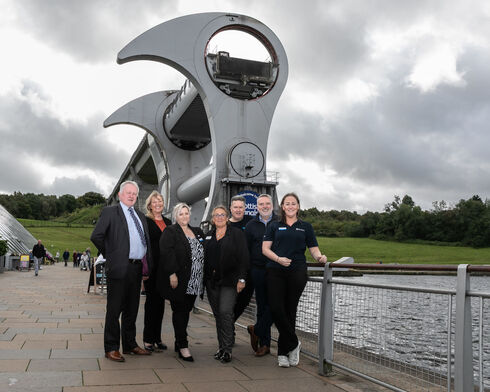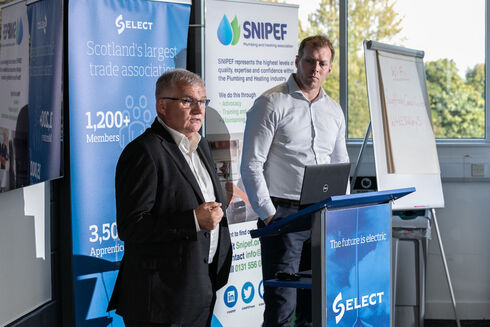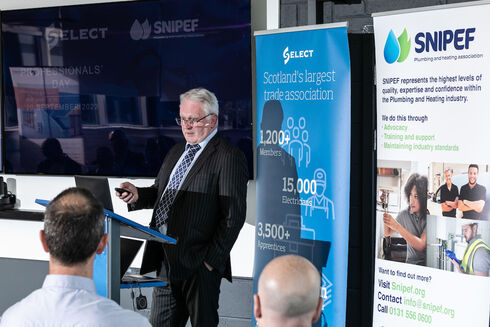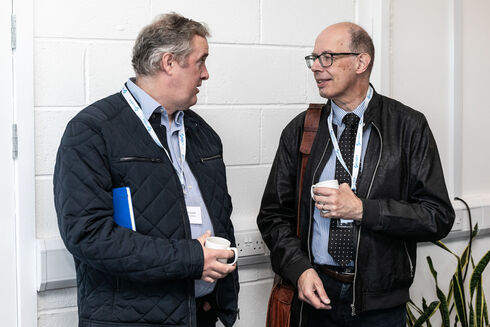
Fitting heat pumps and solar panels
3 October 2023

An insight into the workings of domestic energy systems using heat pumps and solar panels, as well as the work necessary for their installation and maintenance, was given at a Professionals Day event held recently at the Falkirk Wheel complex (above) and organised by the SELECT trade organisation for Scottish electrical contractors and SNIPEF, the plumbing and heating association for professionals in Scotland and Northern Ireland.
Andy Fogarty from SNIPEF member James Frew Ltd and Steve Dean from heating and cooling equipment manufacturer, Vaillant, gave an overview of heat pump installation. They said that units could work in external temperatures of as low as minus 25C.
Heat pumps typically operate round-the-clock in order to build up residual background heat that can be raised further as required. This is one reason why electricity companies are introducing smart meters and flexible tariffs so that consumers can benefit from optimal pricing.
A blend of skills are needed for an installation, including electrical and plumbing professionals, who will likely hire equipment for various tasks. Radiators, for example, often have to be bigger than traditional sizes and fed by larger 28mm diameter pipes.
Interestingly, homeowners and contractors might benefit from forward planning. Instead of fitting a like-for-like gas boiler when refitting a kitchen or another room in a house, it might be worthwhile to install a heat pump and underfloor heating to avoid another replacement project at a future date.
Bob Cairney, SELECT’s Director of Technical Services, gave an overview of solar PV and battery storage system. The latter give the opportunity to time-shift the consumption of electricity as required, as well as perhaps selling surplus capacity to the grid.
Advantages of such setups include lower maintenance and, most importantly, zero carbon emissions at the point of use. Disadvantages might include aesthetics, initial installation costs and the need to orientate the solar panels for maximum efficiency. The current generated is DC which has to be converted to AC by an inverter. Periodic cleaning of system components is also required.
SELECT plans to hold another Professionals Day next year.
● The Falkirk Wheel was a very appropriate venue for the event. This ingenious rotating boat lift was opened in 2002 and connects two canals which were previously linked by a series of 11 locks. Apparently, the system only uses an amount of electricity equivalent to powering eight kettles as it completes its four minute cycle.
Photos: SELECT




